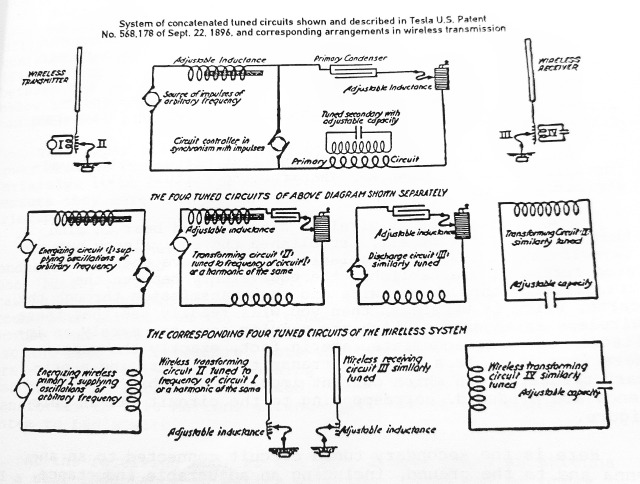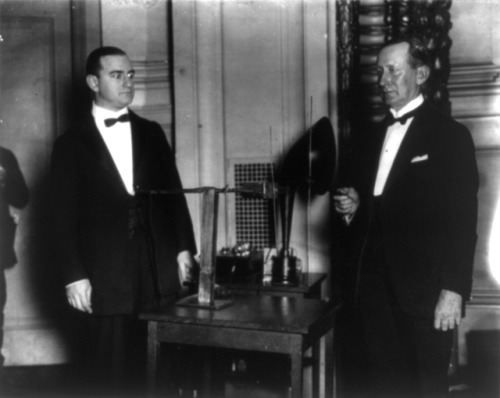#guglielmo marconi
Nikola Tesla Explaining How Guglielmo Marconi Copied His Wireless System

“Now, it is important to give you a clear idea of the differences between the apparatus I produced and the contemporary apparatus. I have selected just these diagrams to give you, in a few words, the exact differences between the system I have developed and the system illustrated below in this diagram, which is typical of the systems that had been used prior to my invention.
"This upper diagram is taken from my patents, and this lower drawing from a patent of Marconi which appeared in 1901. Certainly, it is proper to compare his arrangements with mine because they are used at the time when I brought out these principles.
"As you see, here in this figure on the right is my conductor connected to the ground and to the antenna, with absolutely no break in it. This other [in Marconi patent drawing] is a conductor connected to the antenna and the ground with a break in it. It cannot compare with mine because that break means resistance and diminution of the resonant rise. Furthermore, note the difference that I have here—the primary energy passing into a transformer—and that these two circuits are tuned. There is no primary or a transformer in this Marconi arrangement. It is a wasteful system to begin with.
"At the receiving end, as you see, I have again an antenna and a self-inductance in series with the ground and no break. He has a wire connected to the ground and to an antenna, a break or device of high, very high resistance with which it is absolutely impossible to obtain any practical results.
"My system is a system which can be perfectly attuned, and it will transmit to this antenna, here at the left, hundreds of thousands of times, millions of times, the energy which his device can transmit to his receiver.
"Furthermore, my system is a system which is exclusive, which can be tuned and rendered private; that of Marconi can not be tuned. Moreover, his transmitter generates electromagnetic waves a very high frequency, which are absorbed in the air and penetrate only a few miles, while mine produces current waves which pass to the opposite point of the glow with the greatest facility, and can affect instruments at any distance.
"If you take these two contemporaneous diagrams, and examine the subsequent developments, you will find that absolutely not a vestige of the apparatus of Marconi remains, and that in all the present systems there is nothing but my four-tuned circuits. Everybody is using them.

"Every wireless message that has ever been transmitted to any distance has been transmitted by this apparatus; there is no other way. Mr. Marconi came here when he announced that he had made a transmission across the Atlantic. I congratulated him. I said to my secretary, "I can not understand how Marconi could obtain these results. His apparatus cannot do this; he must use my apparatus.” My secretary said, “How can Marconi use your apparatus when here is his statement that he had tried it and it did not work did not work?” But, when you examine the publications of a year later, you will note Marconi comes out with the statement that he had used these four circuits, and the only excuse that he has put up is that he did not know that these four circuits had to be attuned. That was his excuse. In the meantime, he had been using this apparatus. Every message that has ever been transmitted to any distance, by telegraph or telephone—wireless, has been by the use of these instrumentalities and no others.“
(Nikola Tesla in a pre-hearing interview with his legal counsel in 1916 to protect his radio patents from Guglielmo Marconi. “Nikola Tesla On His Works With Alternating Currents and Their Application to Wireless Telegraphy, and Transmission of Power.” Twenty First Century Books, Breckenridge, Colorado, 2002.)
Alfred Norton Goldsmith, a founder of the Institute of Radio Engineers, one of the predecessor societies to the modern IEEE, with Italian Nobel laureate Guglielmo Marconi, June 26th, 1922.
Post link

